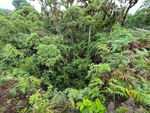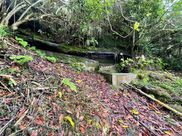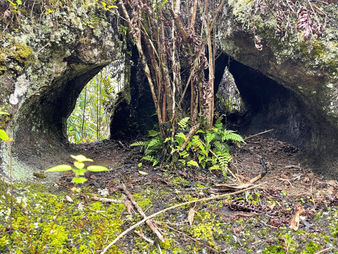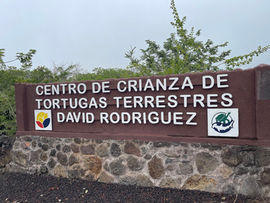
Island Life
Conservation, the introduction of new species, and impact of urbanization and tourism on the islands
After landing in Baltra, we visited Santa Cruz, Floreana, and San Cristobal Islands. Each island was unique in population, culture, flora, and fauna.
One thing I found unique on the islands was how to obtain and how to dispose of toilet paper. At most public places, individuals have to pay for toilet paper. There's either a restroom attendant or a machine that portions it out. From my experience, the price for this ranged between ten cents to a dollar. Additionally, the islands don't have plumbing that accommodates toilet paper. Instead, all toilet paper must be disposed of in the trash. These two simple aspects were very different from what I'm used to in the U.S.

Santa Cruz
Santa Cruz is the tourism center of the Galápagos, partially due to its proximity to the airport. While in Santa Cruz, we visited Puerto Ayora, El Chato tortoise reserve, La Loberia, lava tunnels, Punta Estrada, Las Grietas, and the Charles Darwin Research Station.
While in Santa Cruz, we snorkeled with various fish, sea turtles, sea lions, and more! On land, we observed the island's unique tortoise species and lizards. As amazing as it was to see the variety of wildlife in Santa Cruz, climate change and tourism threaten life as these animals know it. As the earth warms, the oceans do too. The fauna in Santa Cruz are accustomed to cold water cycling through shorelines, and heating as it leaves. However, global warming threatens this natural process.
Additionally, the rapid increase in tourism threatens the fauna on land. Because of how many species are endangered, the islands have very strict tourism standards. Visitors can't bring food, wildlife, or plants to or from the islands. Additionally, the islands limit the number of tourists they see per year. While visiting, tourists aren't allowed to touch wildlife and are encouraged to do the same with the islands' flora.
Scroll through the gallery below to view my adventures in Santa Cruz!
Floreana
With a population of less than one hundred, Floreana is the smallest island in the Galápagos. It was named after Juan José Flores, the first president of Ecuador. Pirates were exiled to this island when they disobeyed their crew. During our visit, we explored their old caves and learned about their lifestyle. We also saw the original "post office" of the island - a barrel-shaped mailbox where residents would place outgoing letters and retrieve their mail from. Although the island is small, it holds treasures within. Floreana Island has a natural freshwater reserve. Pirates and residents of the island would visit the reserve frequently to gather water to drink and bathe in. During our time on the island, we also got to hear children playing at school and have lunch at a local restaurant.
Scroll through the gallery below to see Floreana Island from my point of view!
San Cristobal
San Cristobal is the easternmost island in the Galápagos. It's also the oldest geologically. On San Cristobal, we visited the Interpretation Center, where we learned about the history of the islands in natural, human, and conservation terms. We also visited Centro de Crianza de Tortugas Terrestres, a tortoise reserve, and El Junco, where we climbed what felt like a thousand stairs to view the lagoon. Finally, we visited Tijeretas Hill and La Loberia beach, where we took in the spectacular view of the island and hung out with some playful sea lions.
Scroll through the gallery below to enjoy the breathtaking views of San Cristobal!










































































